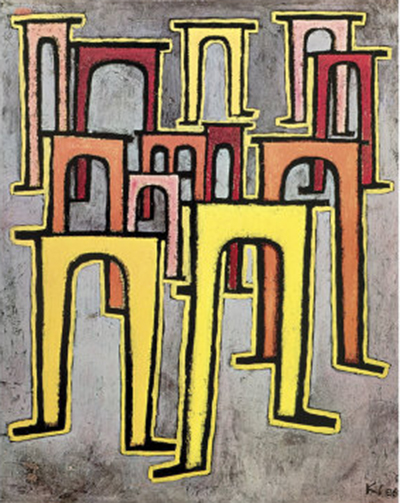Viaducts Break Ranks bring the Guggenheim Bridge alive, as a political symbol of struggle
This artwork, The Revolution of the Viaduct, was produced in 1937 by the artist Paul Klee, at the beginning of his last works period. Klee’s artwork dealt with political themes that mirrored his beliefs.
An anti-fascist painting, in the painting plane Klee depicts the arches of the notorious Guggenheim Bridge breaking away from the bank - as if refusing to remain part of the Nazi establishment. Picasso famously created another anti-fascist painting, Guernica.
The arches resemble human legs poised in a straddle position that have out-turned feet, ready to stand against their enemy. Painted in vivid yellow and red tones against a light grey background, the arches are outlined in black, creating an eye-catching image.
The Guggenheim Bridge was an iconic structure that was hailed at the time by the Germans. Therefore, when the viaducts break ranks, it can be seen as Klee’s disagreement with the state of Europe at that time, especially as he left Germany for his homeland, Switzerland at this time.
Paul Klee was an artist who was prominent in art movements such as Surrealism, Expressionism and Cubism. Klee was influenced by artists such as Robert Delaunay and Maurice de Vlaminck, who inspired him with their bold use of colour.
Highly respected by many famous artists for example, the German artist Franz Marc, and Klee’s colleague, the Russian painter Wassily Kandinsky, who taught alongside him at the Bauhaus school of art, design and architecture in Germany.
The painting is now situated in Hamburger Kunsthalle, Germany, the image is painted in the medium of oil on oil grounding, on cotton stretcher frame with dimensions of 60 x 50 cm.




